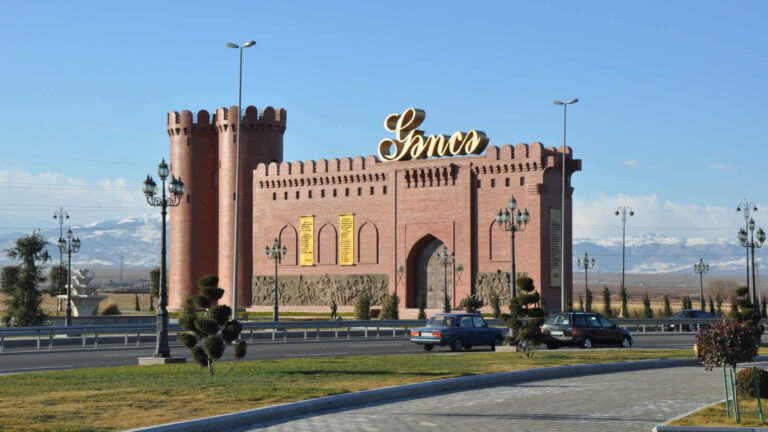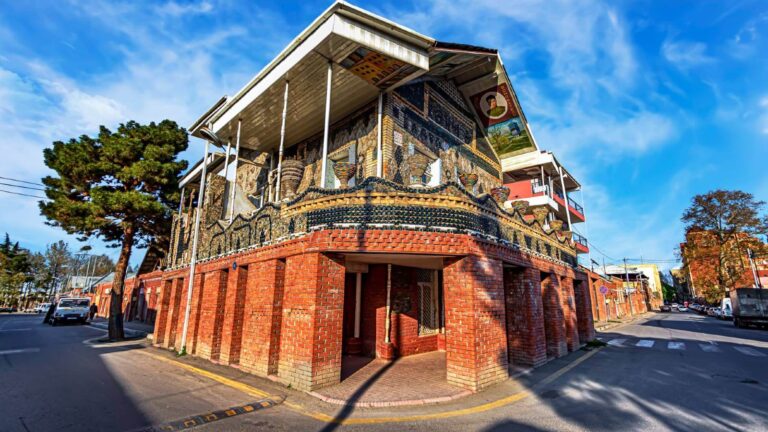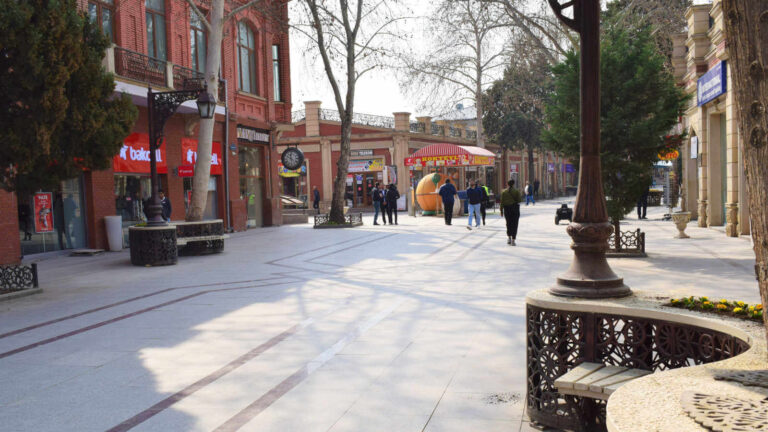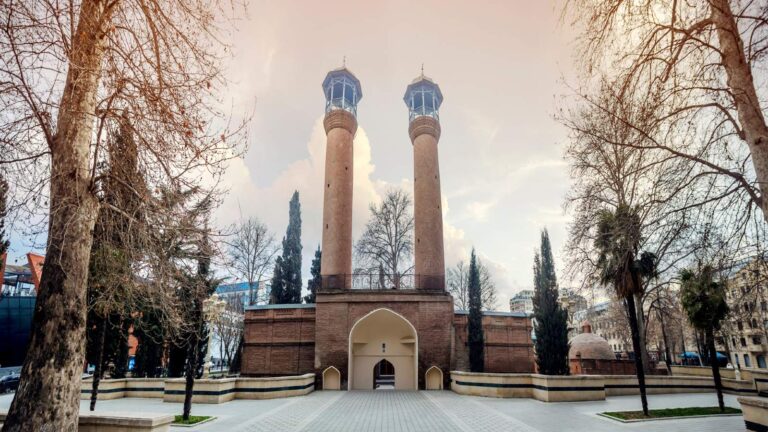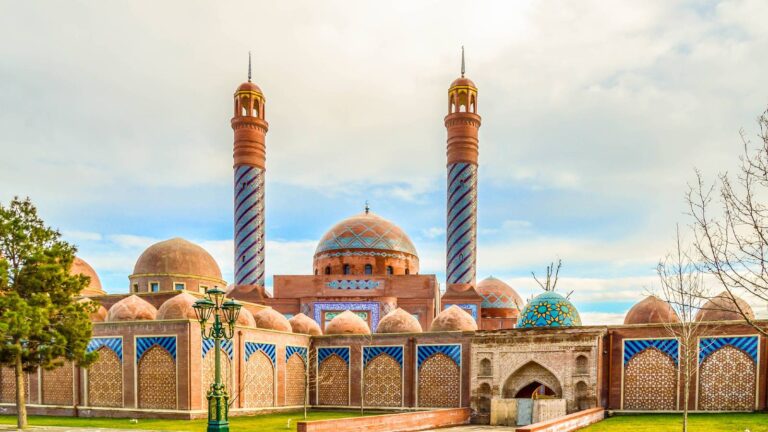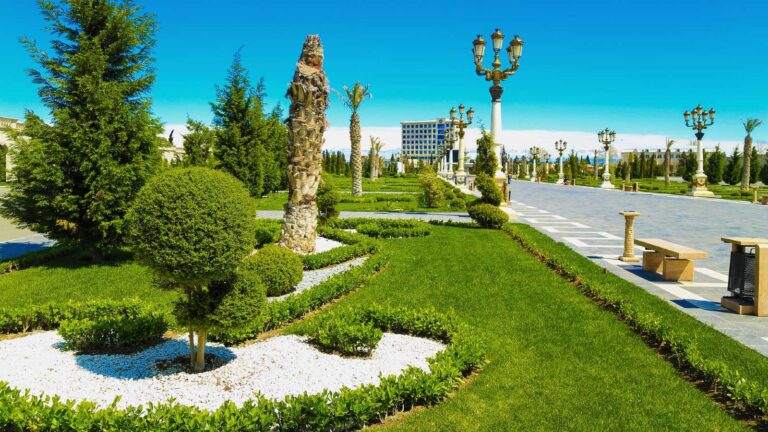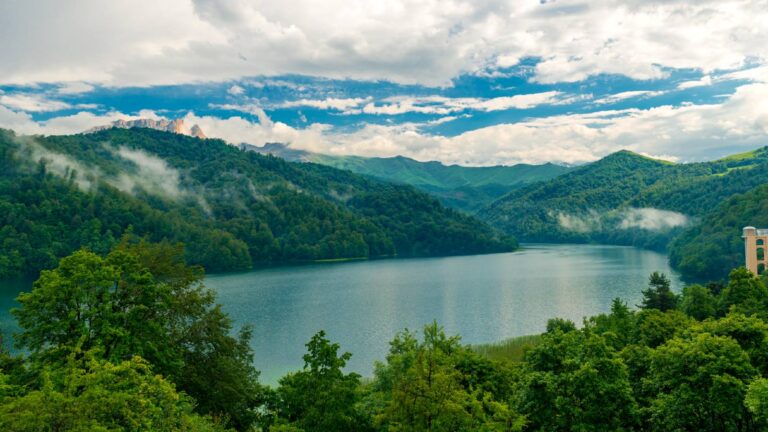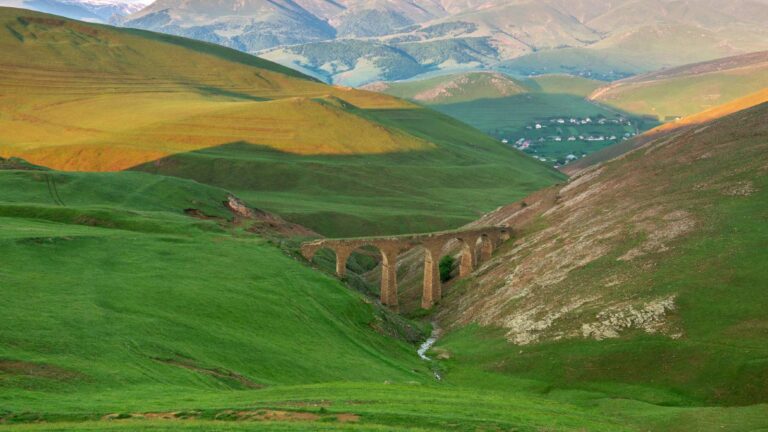Getting There
You can get to the Mausoleum by taxi or by private car.
What to Expect
The ancient Ganja city is rich in both historical and architectural monuments. The Mausoleum of genius poet Nizami Ganjavi, which is located at the entrance of the city can be called the symbol of Ganja. In 1947, a monument dedicated to the 750th anniversary of the “Seven Beauties” (“Haft Peykar”) was erected on the poet’s grave. The mausoleum is in the territory of Hamdan – present-day Ahmadli village, which was gifted to Nizami by Gizil Arslan.
The local population still calls this area “Sheikh plain” and “Shikh plain”. The archeological excavations carried out in the Shikh plain, where the mausoleum is located, prove that this area was once a kind of honorable alley of the city of Ganja.
History
The greatest poet, philosopher and representative of the Easter Renaissance who was born in the XII century. Genius Azerbaijani poet and thinker Nizami Ganjavi lived and died in Ganja city where his nickname comes from. Humanity, love, valuation of knowledge and women are the motifs at the very heart of Nizami’s philosophy and poetry. The poet regarded it as his sacred mission to apply every ounce of creativity to the service of his people. Nizami Ganjavi brought a quite new poetic voice and impulsion to world literature with five poems, which have lost none of their impact (“The Treasure of Secrets”, “Khosrov and Shirin”, “Leyli and Majnun”, “Seven Beauties” and “Iskandarname”). These substantive lyrical verses and poems, a new genre in their time, were later glorified as “Panj ganj” (Five Treasures) and are like precious pearls adorning the treasury of world literature.
The great volume of Nizami Ganjavi’s art and the purity of his aesthetic ideal greatly influenced the ensuing development of Azerbaijani literature. The principles of humanism and democracy defined by this great genius extended humanistic trends not only in Azerbaijan, but also in the whole Near and Middle East, and in Western literature. Nizami Ganjavi passed away in 1209 in his native city of Ganja.
As an expression of love for the poet the first tomb was erected over the poet’s grave and was built from white limestone in the 12th-14th centuries In different years, the tomb was repaired and restored at the initiative of Mirza Adigozel bey Karabagi and Asker Agha Gorani, General Israfil Bey Yadigarzade. Ultimately, it is fundamentally updated after the decision to celebrate the 800th anniversary of the poet. During the poet’s anniversary held in 1947, the opening of the first magnificent tomb (height 15.2 meters, author I. Vakhutin) took place over the grave. In 1990-1991, the mausoleum surrounding the crypt was reconstructed (architect F. Imam Guliyev). The height of this octagonal building is 22.4 meters. Around the mausoleum there is a sculptural composition with the “Khamsa” theme and the poet’s newly built museum.
Facilities Available
- Nizami Ganjavi Museum

